Riga is the beautiful capital of the Republic of Latvia. The city has a lot to offer tourists: beautiful monuments, interesting history, interesting museums. In addition, it is a place where many cultures intertwine.
This is where history and modernity perfectly combine. The city is the main economic, industrial, communication center (seaport, airport and central railway junction in Riga), cultural and scientific center of the country. The historic Old Town is included on the UNESCO World Cultural and Natural Heritage List.

Riga is the capital and largest city of Latvia, as well as one of the largest metropolises in the Baltic countries. Situated on the Daugava River near its mouth into the Baltic Sea in the Gulf of Riga. It is the main economic, industrial, communication, cultural and scientific center of the country.
Interesting Facts:
– The first settlement in the area was established in the 10th century and was inhabited by the Liw tribe. – Riga is an extremely green city. If we count the area of all parks, squares and boulevards, we will get over 7,000 hectares.
– This city is famous primarily for its Art Nouveau architecture. There are about 700 buildings in this style in the city.
– The skyscraper of the Academy of Sciences of Latvia was built in 1952-1958 and is a gift to the inhabitants of Riga from Stalin.
– Russians constitute almost 40% of the population of Riga and Native Latvians constitute less than 45% of all inhabitants.
– The Latvian capital is a city where many famous people come from. Among other things, it was here that Andrzej Łapicki, a famous Polish actor, and Sergei Eisenstein, a Soviet director, were born.
– The best souvenir from Riga will be a bottle of Black Balsam. It is a herbal liqueur with 45% alcohol content. As the name suggests, the drink has a pure, black color. Interestingly, its recipe is not publicly known.
Best Attractions
Old Town
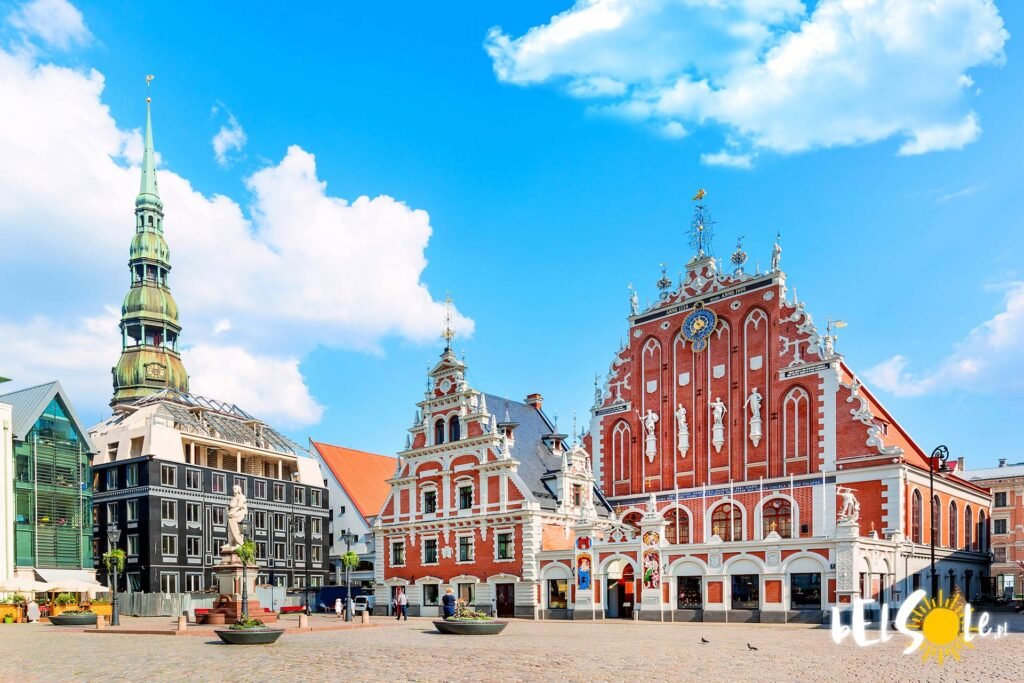
It is best to start your visit to Riga with the pride of the city, i.e. its oldest part. The Old Town is included in the UNESCO World Heritage List. It has beautiful alleys, historic buildings, beautiful squares and courtyards. You will be delighted by the beautiful Riga Art Nouveau. The architecture of old Riga is very richly decorated. The beautiful Three Brothers tenement houses and middle-class tenement houses are worth seeing. A tenement house with wonderful architecture is the House of the Brotherhood of the Blackheads, built at the beginning of the 14th century, formerly called Artus Court. Built together with a monastery in the 13th century, Doma Baznica, Riga’s cathedral, is the largest church among the Baltic countries.
House of the Brotherhood of Blackheads
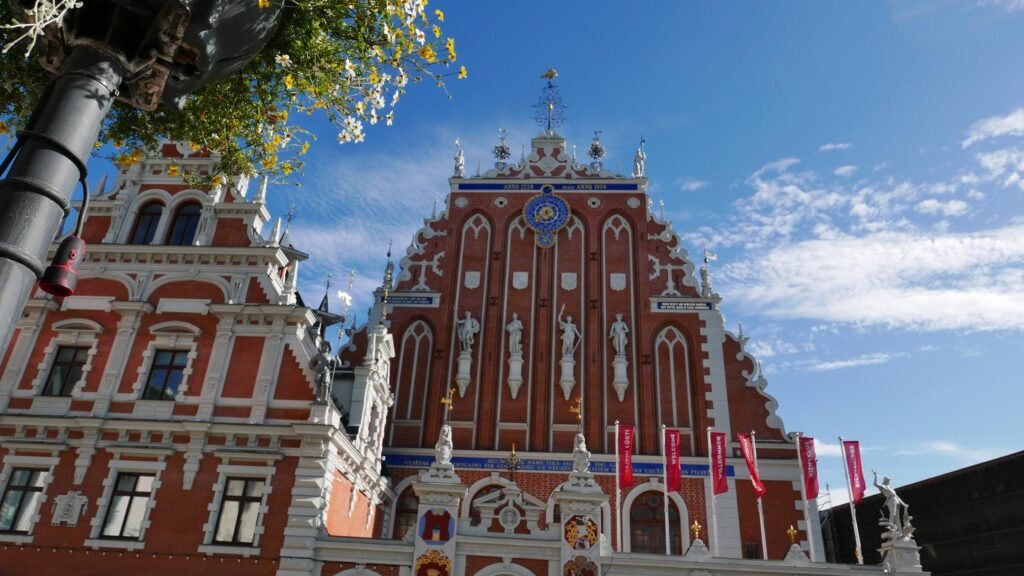
House of the Black Heads, a venue for exhibitions, concerts and other events, is a landmark of Riga Old City and the Latvian capital’s most magnificent edifice.House of the Black Heads was built in 1334 as a venue for meetings and banquets held by Riga’s various public organizations. The building was destroyed by bombs in the Second World War but was fully rebuilt in 1999.Admire the opulent facade of the House of the Black Heads featuring various architectural styles and artistic trends of various periods,
Take a tour of the House of the Black Heads and picture in your imagination the receptions and concerts that were held at the sumptuous Conference Hall during the times of the Black Heads Society.
Take a look at the works of our artisans, craftsmen, and antique restorers: crystal chandeliers, the painted ceiling of the Conference Hall, the exact replicas of 19th-century chairs and sofas, weaponry and armor sets, portraits of the nobility in gilded frames, stained glass with colorful ornamentation, the Black Heads’ Coat of Arms and girandoles.
Inspect the museum’s treasures at the Medieval cellar; See the items that once belonged to the Brotherhood of Black Heads: snuffboxes, silverware, paintings, and pottery; Explore not only the oldest historical exhibits but also those from more recent times; Attend festive events which in the interiors of House of the Black Heads will have a special aura and a truly festive atmosphere; See the replica of the Statue of Roland, the symbol of the Medieval Hanseatic cities, with the original.
Three Brothers
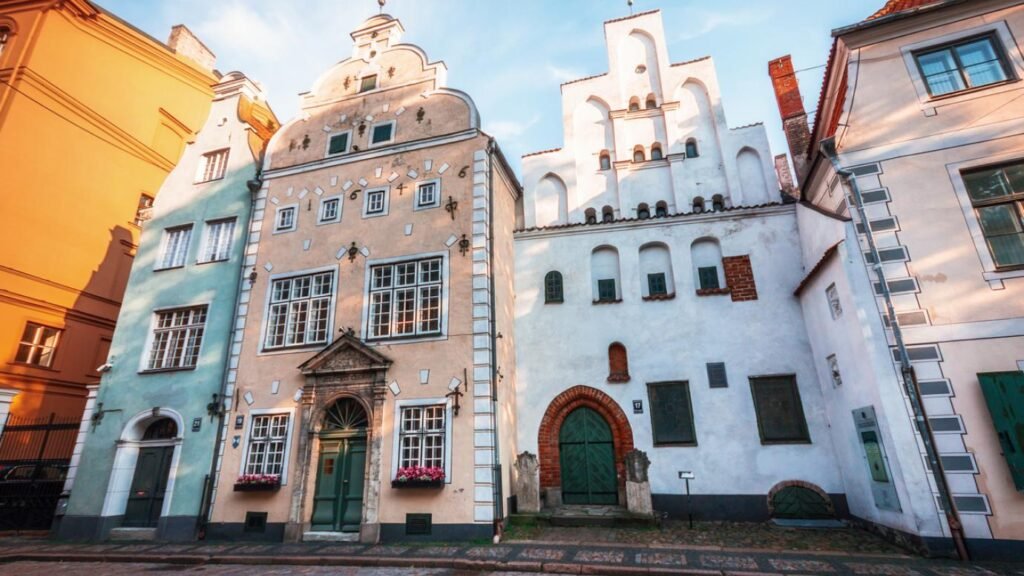
Three Brothers: A complex of three medieval residential houses in Riga on Mazã Pils Street. The buildings were named by analogy to similar buildings in Tallinn (Estonia), which are called the Three Sisters.
Each house was built for a different purpose and at a different time. While the oldest house (no. 17) has existed since 1490, the other two were built in the 17th century. The middle one in 1646, and the last one (no. 21) at the end of the century. The houses have not undergone significant changes since the 17th century, only their facade was renovated and the interior remained in its original form. Currently, some of the rooms are used by the Museum of Architecture and the National Center for the Protection of Cultural Monuments.
Freedom Monument in Riga
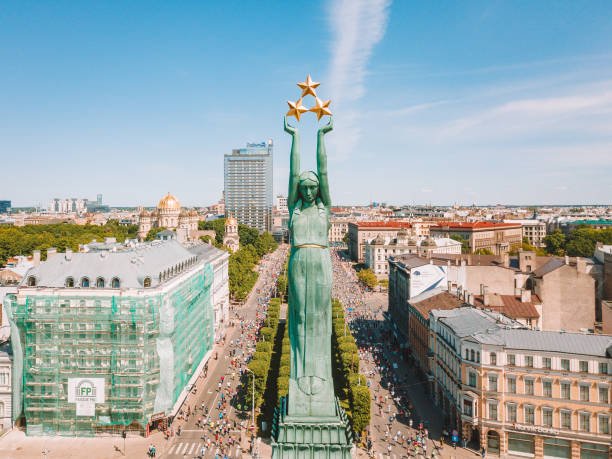
The monument is located in the center of Riga and symbolizes the national sovereignty of Latvia. The sculpture is almost 43 meters high, and at the top of the obelisk there is an allegory of freedom – the stars on it represent the historical regions of Latvia. At the foot of the monument there are numerous figures depicting scenes from Latvian mythology, culture and history.
Automotive Museum in Riga
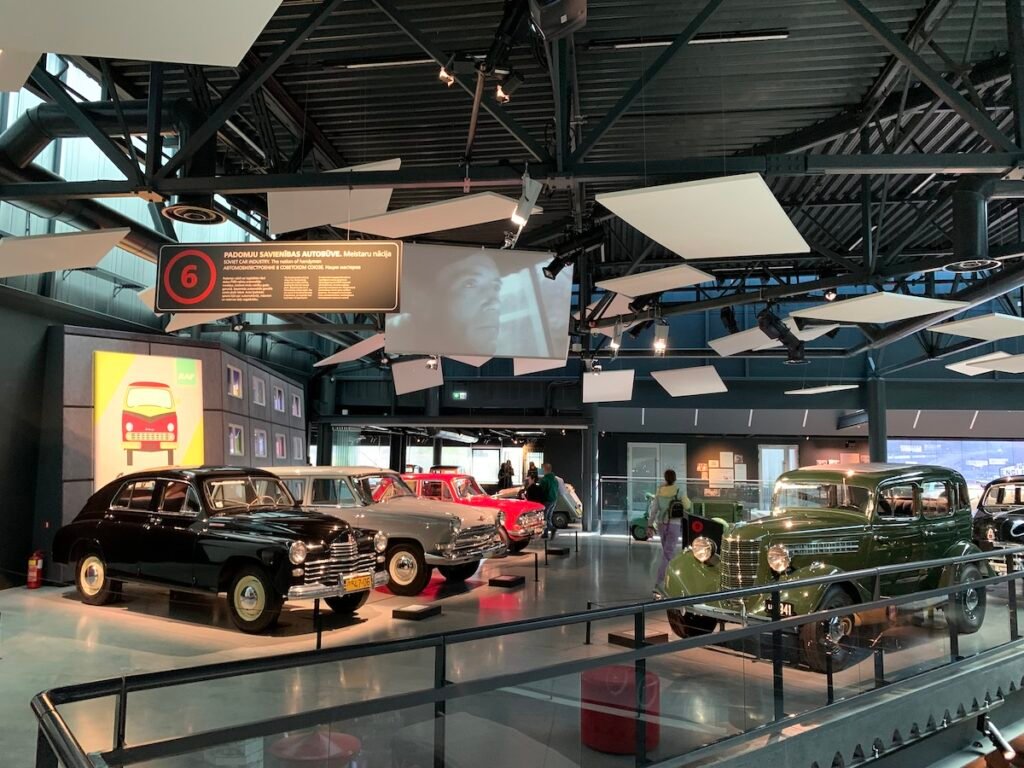
The Riga Motor Museum holds the largest collection of historic cars in the Baltic states. It was founded in 1989 at the initiative of the Latvia Antique (Historic) Automobile Club (AAK) and now displays more than 100 vehicles. Riga was one of the principal industrial cities of the Russian Empire in the years before the First World War, with important companies involved in mechanical engineering, chemicals, rubber manufacturing and electrical engineering. In the Soviet period the Riga Bus Factory (RAF) produced minibuses for the whole of Eastern Europe and the museum holds several examples. The collection also includes many racing cars including a 1938 Auto Union Type D.
Latvian National Opera
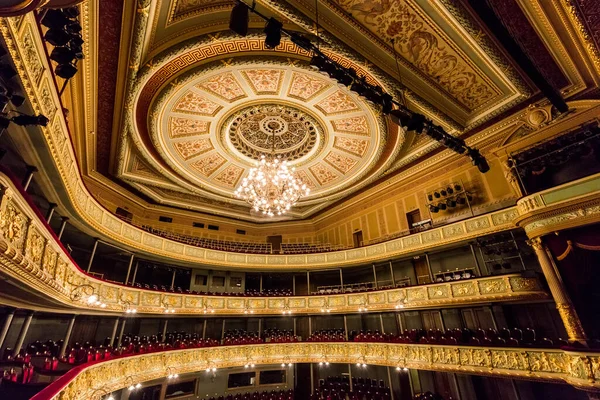
The Latvian National Opera is the home of the Latvian National Opera (LNO) and the Latvian National Ballet (LNB). During the season, which runs from September to June, the LNO stages approximately 200 performances, staging an average of five new performances each season, both opera and ballet. Paying tribute to the traditional values of classical and romantic operas and ballets, which constitute the basis of its repertoire, LNO constantly searches for contemporary forms of expression. LNO is open to the world: the company has an active tour schedule with many distinguished singers, conductors, choreographers and directors who often appear on the LNO stage. In recent seasons, LNO has performed at the Hong Kong Festival, the Bordeaux Opera, the Catania Opera, the Bolshoi Theater in Moscow, the Luxembourg Opera, the Dalhalla Festival in Sweden, and also in Mexico.

Cathedral of the Nativity in Riga
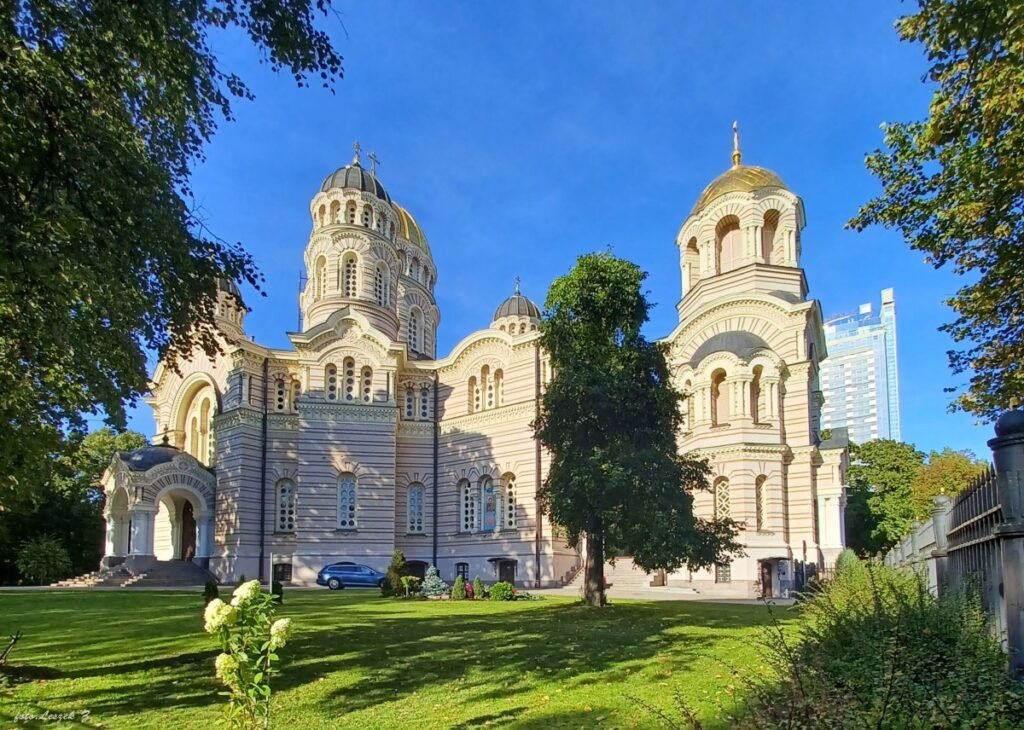
The cathedral is the largest Orthodox church in Riga. The cathedral was inaugurated in 1884. The Neo-Byzantine style building was the most expensive edifice of that time in Riga, its interior was very luxurious and of high artistic quality. The cathedral was renowned for its outstanding collection of ancient icons, Byzantine-style frescoes with ancient Christian ornaments, as well as three iconostases painted by the brightest pedagogues of the St Petersburg Academy of Arts and the famous Russian painter Vasily Vereshchagin. The cathedral survived the Soviet era.
Church of St. Peter in Riga

Church of St. Peter’s Square is located right next to Riga’s Old Town Square, in the heart of the city, and is almost a must-see on city tours. You must come and see the interior of the church and climb its tower, from where there is a view of the surrounding old town and the nearby Dvina River. Depending on your interest in history, the exhibitions taking place inside and your willingness to climb the tower, the tour may last from 15 minutes to an hour.
Skyscraper of the Academy of Sciences of Latvia

The skyscraper of the Academy of Sciences of Latvia was built between 1952 and 1958 and is a gift from Stalin to the inhabitants of Riga. It is designed like the Seven Sisters, a skyscraper in Moscow. It has 21 floor and at the top you can visit the observation deck and admire the panorama of Riga.
Riga Castle
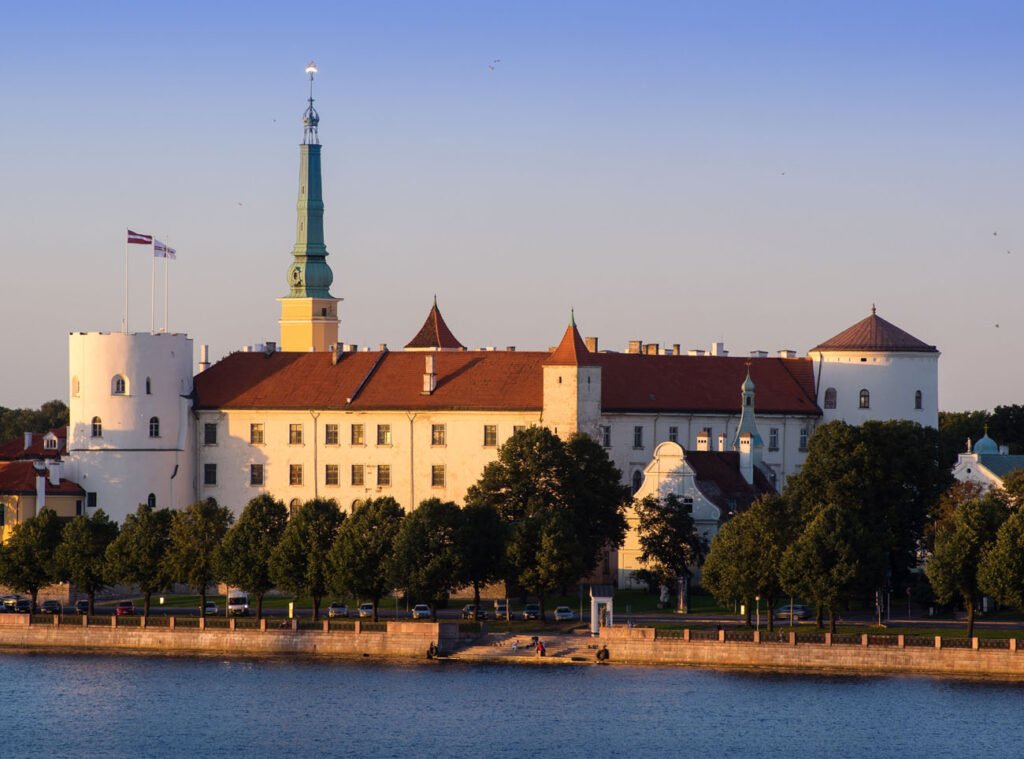
Riga Castle (Rīgas pils) is a castle on the banks of River Daugava. The castle was founded in 1330. Today it is the official residence of the President of Latvia as well as home to several museums.Riga Castle was built in 1330 by the Livonian Order and has served as the residence of the Latvian president since Latvia regained its independence.Over a period of almost 1.5 years, the building services systems of the 11,000 m² castle were renewed and equipped with modern DEOS technology.
Powder Gate
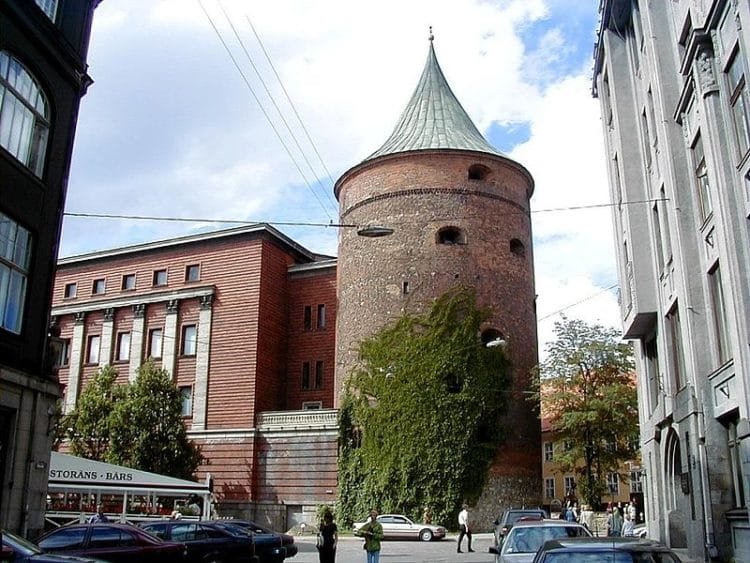
Prochowa Braa is one of medieval Riga’s fortification wall towers, originally called the Sand Tower. Built in 1330. Reconstructed several times, and in the 17th century it was named the Powder Tower due to gunpowder stored there. Its present appearance was set in 1650. In 1919 the War Museum was established in it. In 1937–1939, an annex building was added according to a project by architect A. Galindoms, now this part hosts large and various exhibitions.
Swedish Gate
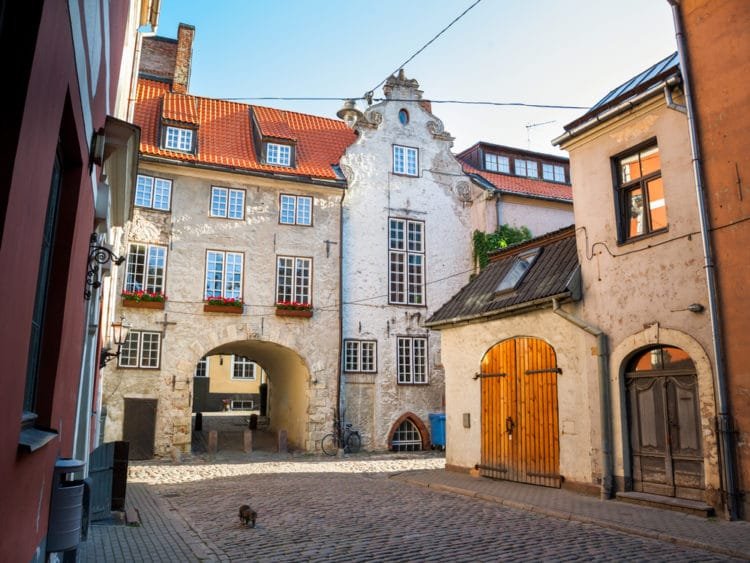
The Swedish Gate built in 1698 after the Swedish occupation of Riga is the only gate to survive and retain its original looks. It was built in the fortification wall, surrounding the old city. Most of the wall was destroyed in the 1800s in order to improve traffic communication in the economically flourishing city. The city executioner lived in the rooms above the gate at that time. According to the legend, there was a red rose in his window above the gate every night before an execution.
Cat house

One of the most popular and interesting attractions in Riga is the Riga Cat House. Located in Old Riga, near the city center, the Cat House is easily noticeable thanks to the two black cat statues placed on the roof. The building was built in 1909 and is characterized by Art Nouveau architecture. Although the building itself is beautiful, it is famous for its interesting history. Legend has it that the owner of the building was a merchant who wanted to become a member of the Riga Merchants’ Guild. The guild denied him membership, which made the trader very angry, so he decided to take revenge in a creative way. He ordered two statues of black cats to be placed on his roof, with their tails pointing towards the Guild building.
Occupation Museum in Riga

This museum details Latvia’s Soviet and Nazi occupations between 1940 and 1991. Some of the exhibits are disturbing, including first-hand accounts of the murder of Rīga’s once-substantial Jewish population, a re-creation of a gulag cell and many photographs that detail the atrocities. Latvia’s active resistance of the 1950s, the passive resistance of the 1970s and the pivotal popular resistance of the early 1990s are fully detailed. There are daily tours in English at 2pm and 4pm.
Riga Central Market
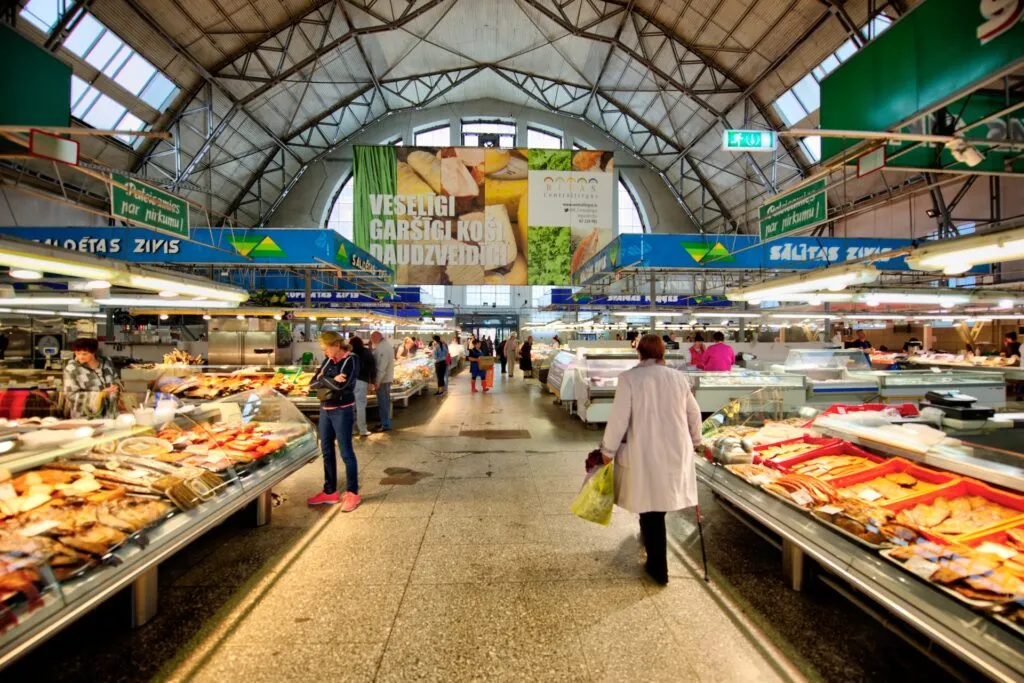
The Central Market is the place in Riga where many locals get groceries. It’s an ideal spot to immerse yourself in the local scene and get insight into Latvian life. This central market is the largest in the Baltic Sea region and one of the largest markets of this type in Europe. It covers an area of approximately 72,000 square meters, has over 3,000 trade stands and is visited by almost 100,000 visitors a day. The reason the market square has such an interesting exterior design is that these semi-cylindrical buildings are converted German Zeppelin hangars from World War I. The market consists of 5 hangars, or “pavilions” as they call it in Latvia. Each of them focuses on a different type of product: meat, fish, vegetables, dairy products, etc. So if you are looking only for fresh products from local and organic farmers in Latvia. This is the perfect place for shopping.
